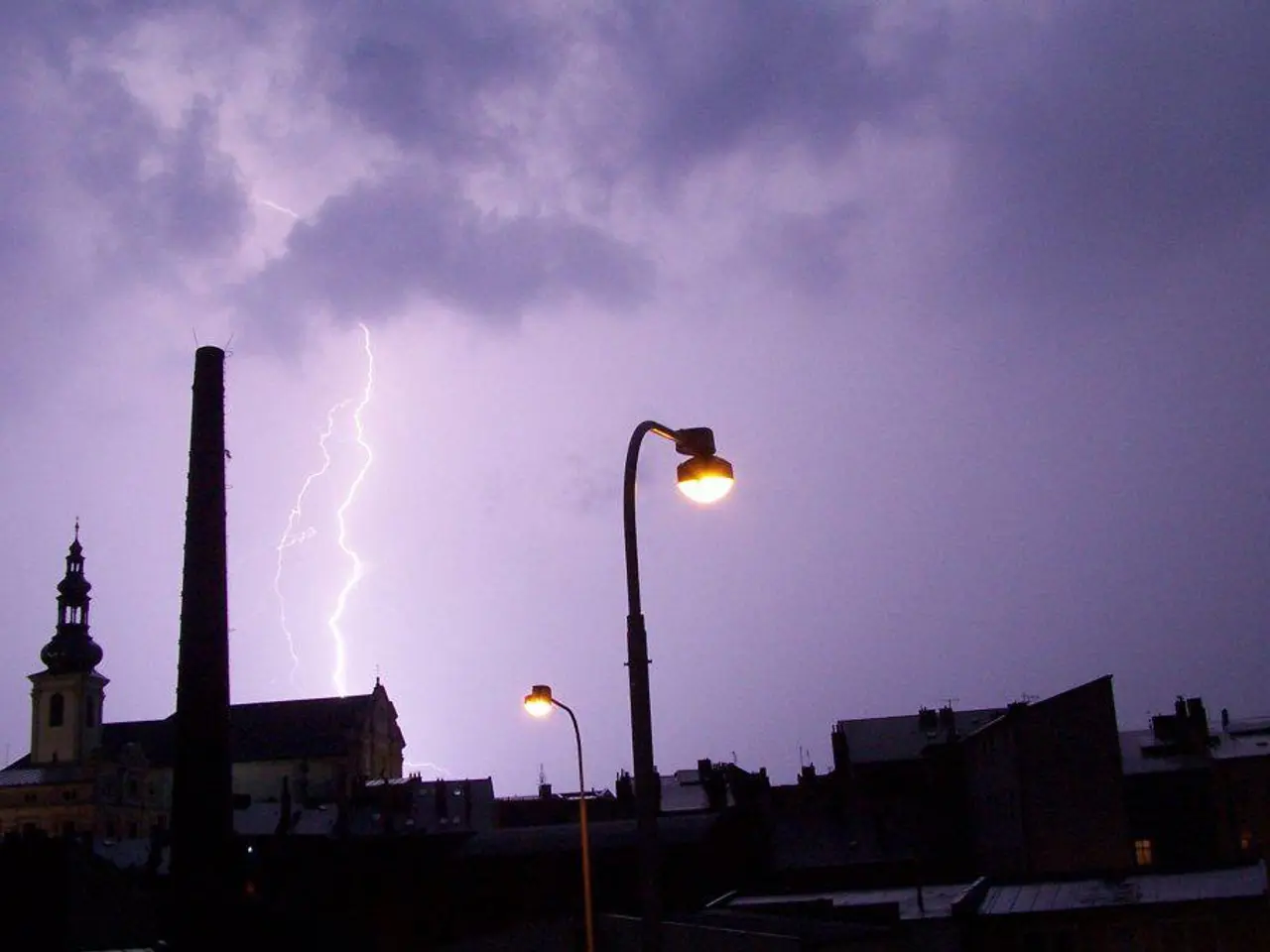Eastward Newfoundland experiences forced relocations due to a blazing forest fire in rural settlements.
Urgent Update: Wildfire Crisis in Eastern Newfoundland
The wildfire situation in eastern Newfoundland remains critical, with several active fires threatening communities and forcing thousands into evacuation. As of August 8, 2025, the largest wildfire, the Kingston Fire near the Avalon Peninsula, has grown to approximately 2,875 hectares.
Current Status:
The Kingston Fire, the largest of the active fires, has grown significantly since it was first reported. It is currently estimated to be around 2,875 hectares, with most growth on its west side. Containment efforts include cutting two 1-km fuel breaks near Perry’s Cove, deployments of three water bombers, three helicopters, and multiple ground crews, with a fourth bomber added recently.
The Holyrood fire is comparatively smaller and holding at about 22 hectares but still has some hot spots. The Martin Lake fire, located on the west side of Conception Bay, covers around 230 hectares and remains smoky. However, dozer guards protect nearby cabins, with multiple aircraft actively combating it.
Impact on Communities:
Thousands of residents remain evacuated, with immediate evacuation orders issued for the Town of Salmon Cove and Ochre Pit Cove. Evacuation advisories and alerts extend to cabin owners and towns such as the Martin Lake area, Rushy Pond, Rifle Lake, and recently the Town of Victoria.
Accommodations for evacuees, especially on the Avalon Peninsula near the largest wildfire, are severely limited, adding pressure on displaced populations.
Response and Assistance:
The provincial government is coordinating closely with federal, municipal, and community partners to ensure safety and containment efforts. Federal assistance has been granted, with the Canadian Armed Forces providing fire reconnaissance, planning, coordination support, and firefighter personnel.
Additional firefighting resources are arriving, including 20 wildland firefighters from Ontario and four water bombers along with a bird dog from Quebec expected over the weekend. Volunteer fire departments are also playing a crucial role in the efforts to control the wildfire.
Predicted Impact:
Premier John Hogan has emphasised the severity of the situation, noting that entire communities are at risk. The ongoing growth of fires, evacuations, and scarcity of accommodations suggest continued disruption for affected communities. Fuel breaks, aerial attacks, and ground operations aim to contain fires, but the threat remains significant.
Additional Information:
- Provincial officials have established a reception centre for displaced residents at the Persalvic School Complex in Victoria, N.L.
- The assistance includes volunteer fire departments in the efforts to control the wildfire.
- The fire is approximately one kilometre from the group of communities mentioned.
- Canada has airdropped humanitarian aid into Gaza.
- Air Canada flight attendants are casting their final ballots in a strike vote.
- Nova Scotia provincial parks are closing due to wildfire concerns.
- Saskatoon is experiencing a strong housing market this summer.
- A shooting at a Los Angeles music festival after-party has resulted in 2 deaths and 6 injuries.
In the light of the critical wildfire situation in eastern Newfoundland, it is essential for meteorologists to closely monitor the weather conditions, as high temperatures and dry weather could further exacerbate the fires.
Meanwhile, the science community is actively involved in researching environmental-science factors that could contribute to the spread of wildfires, offering valuable general-news insights for both the immediate response and future preparedness efforts.







